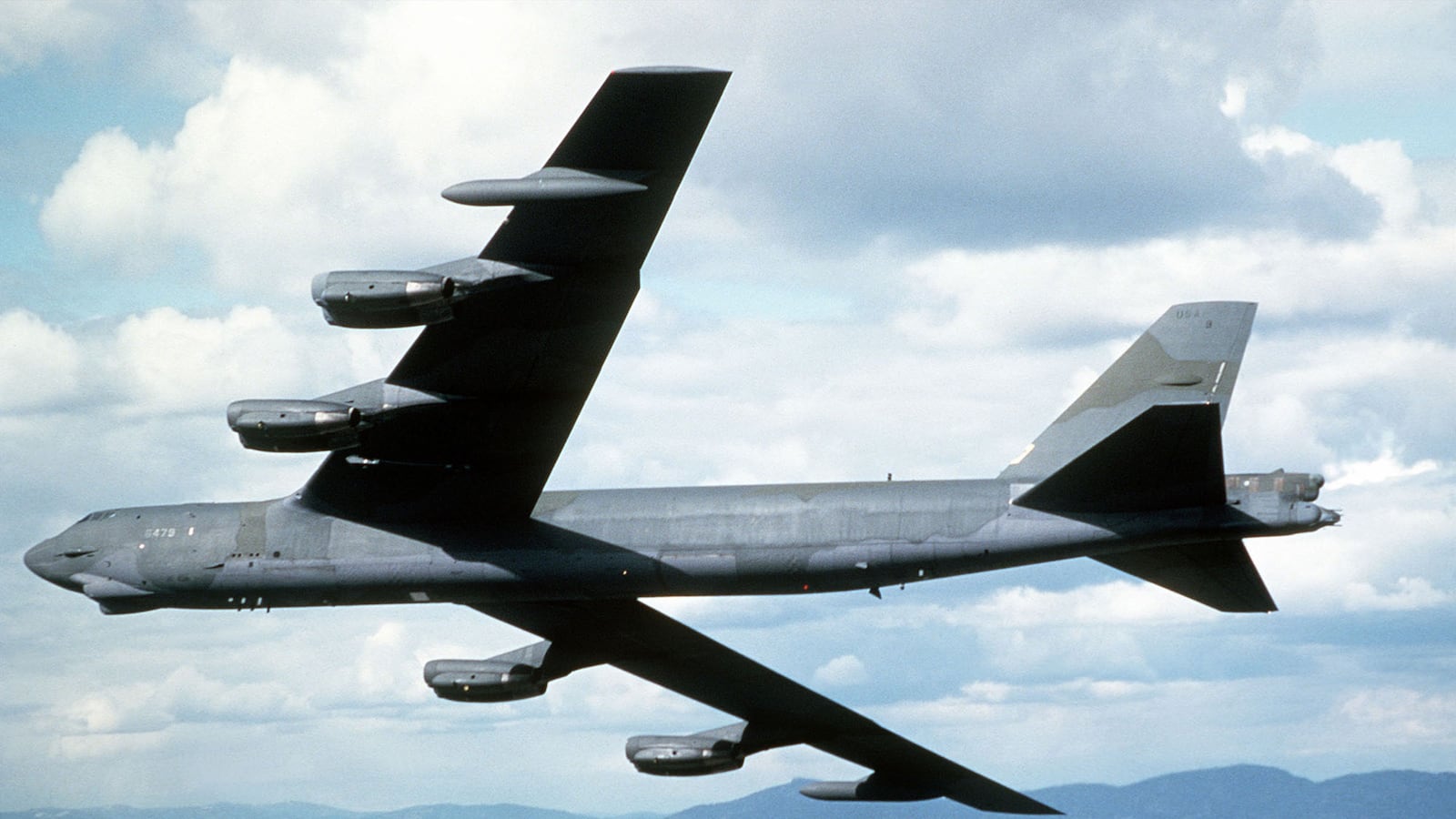The U.S. Air Force is taking a serious look at overhauling the nearly 60 year-old B-52 bomber—including a new engine for the ancient plane. The question is not whether it makes sense, but why it hasn’t been done before. The answers include poor planning, budgetary procedures that defied economic logic, and at least one bone-headed accounting error.
The B-52 first entered service in the mid-1950s. Putting new engines on the “Buff,” or Big Ugly Fat (cough) Fella, became a possibility after 1978, when the commercial airplane business launched two modern engines, the Rolls-Royce RB.211-535 and the PW2000. Unlike the first generation of high-bypass engines made for the 747, they were the right size for the Buff, with four new engines replacing the original eight. Pratt & Whitney published a study in early 1982 that showed that the re-engined airplane would fly farther and need less tanker support.
But in 1982, gas was cheap. And the Air Force expected to replace all its bombers well before 2000, with 100 B-1Bs and 132 Advanced Technology Bombers—the airplane that became the Northrop Grumman B-2. The idea went nowhere.
Within another decade, the B-2 program had been cut back to 21 aircraft, the B-1B had been shorn of its cruise-missile armament under the first Strategic Arms Reduction Treaty, and the B-52 was going to be around for a while longer. In 1996, it was Rolls-Royce, which had just bought the Allison company and thereby acquired a U.S. military foothold, that proposed to lease RB.211-535s to the Pentagon, eliminating the upfront cost of buying 400-plus new engines.
Legal problems with the lease deal were one reason for the proposal’s failure. It was a sign of a deeper and as yet unsolved problem: Budget rules often run counter to common sense. Corporations and families may decide every day to spend today’s money on reducing tomorrow’s energy bill, calculating the payback period. In the Pentagon, it’s nearly impossible. Procurement budgets for weapon systems and operational-cost accounts are separated by a near-unbreachable wall. It’s easier for the Air Force to spend money on golf carts for on-base transport, or solar panels for the O-club roof, than to put new fuel-saving engines on its older aircraft.
But as a Defense Science Board task force on the B-52 re-engine proposal reported in 2004, the Air Force also made an elementary mistake. It had assessed the payback period using fuel prices on the ground, and overlooked the fact that fuel coming out of the back end of a KC-135 tanker plane was a little more expensive. Fifteen times more expensive, to be exact. The DSB recommended that the Air Force proceed with a new engine immediately, a recommendation that vanished without a trace in the service bureaucracy. The same fate overtook a National Academy of Sciences report in 2009 that recommended new engines for the B-1B and E-3 Sentry as well.
The economic case for re-engining the B-52 should in theory have become weaker in the decade since the DSB report, given that the retirement date has not changed, but the reverse has happened. Newer engines burn less fuel and that fuel costs more. The maintenance cost of the TF33, the wheezy old 1950s-technology engine fitted to the B-52 today, has soared past Air Force predictions, possibly because it’s not just a matter of nobody making TF33s anymore; nobody makes engines that even look like TF33s.
Today’s new engine candidates are designed to stay on the wing so long that they will never be removed routinely until the B-52s are retired. Moreover, the new engines—Pratt & Whitney could offer a version of the engine it makes for the latest Airbus A320Neo version, while General Electric is proposing eight of its CF34-10s—are significantly less fuel-thirsty than the engines that were offered the last time around.
The technical risk is manageable. There have been questions about the engine-out characteristics of a four-engine B-52, but if that issue cannot be solved there is an eight-engine option with General Electric CF34-10.
Do some generals worry that upgrading old airplanes weakens the case for new ones? That would not be logical, even though stories of pilots flying their grandfathers’ bombers make good copy when you’re lobbying for budgets. The longevity of combat aircraft is a good-news story: Since today’s B-52s rolled off the Wichita production line, the Navy has launched and scrapped two classes of destroyer and four cruiser classes, and that comparison makes a $550 million Long Range Strike Bomber look a little more digestible.
Operationally, the case for extending the B-52’s life is at least as strong as ever. The decision to rebuild the nuclear triad includes a new long-range cruise missile. In the Pentagon’s new “Air Sea Battle” concept, the idea that B-52s carrying Lockheed Martin’s Long-Range Anti-Ship Missiles could be almost anywhere, able to hit ships while staying far out of range of missiles or even carrier-based fighters, will concentrate an adversary’s mind wonderfully. And when a hypersonic strike weapon is available, what better platform than an aircraft that was originally built to carry a Mach 14 weapon (the 1,000-mile-range, nuclear-armed Skybolt)?
The B-52 is not the only Air Force aircraft that might need a new engine. The 2009 National Academy report pointed out that the Boeing C-17 military transport is the Air Force’s biggest fuel user, and that its early-1980s engines could benefit from a technology infusion—changing parts rather than outright replacement. If the E-3 Airborne Warning & Control System (Awacs) is not to be replaced before 2030, it would likely make sense to replace their TF33s: Indeed, many export Awacs aircraft were delivered with CFM56 engines, so the installation would carry little technical risk. It would not only save fuel and money but keep those scarce, high-demand aircraft in the air rather than the hangar. The challenge is to make sure that common-sense, valuable opportunities don’t fall through the cracks again.
This column also appears in the latest issue of Aviation Week & Space Technology. For more of Sweetman’s columns, see: aviationweek.com/columns/commanders-intent





